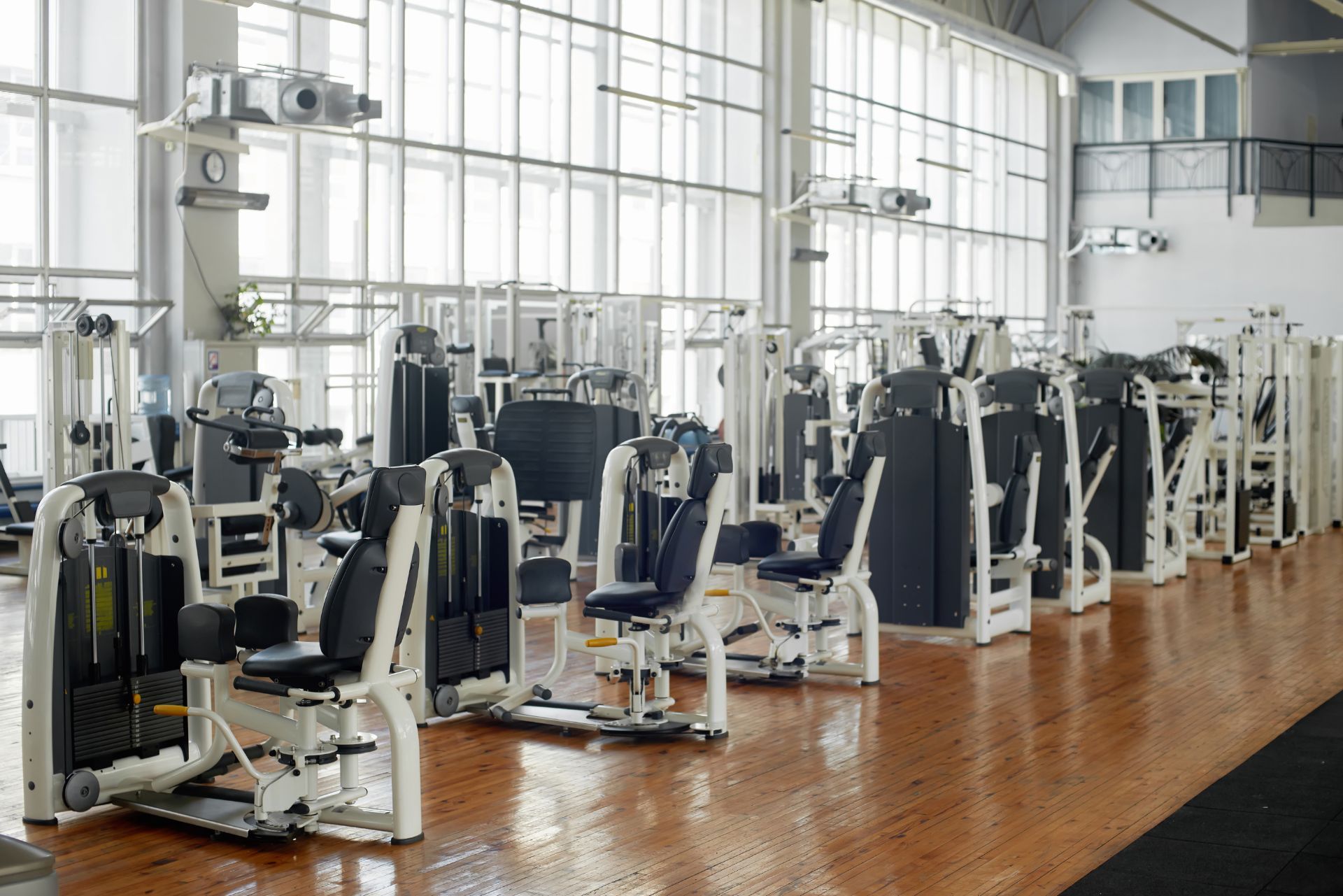Top 3 Recommended Policies

Opening and operating a fitness center in New York is a promising venture, given the state’s dynamic population and growing health-conscious culture. However, with opportunity comes risk. From potential injuries to property damage, fitness centers face unique challenges that make insurance not just a formality but a necessity. This comprehensive guide covers everything you need to know about fitness center insurance in New York, including the types of coverage available, legal requirements, risk management strategies, and tips for securing the best policy for your business.
Understanding the Importance of Fitness Center Insurance in New York
The fitness industry in New York has seen significant growth over the past decade. According to IBISWorld, the gym, health, and fitness clubs industry in the U.S. grew by over 7% annually before the pandemic, and New York remains one of the top states for gym memberships. With thousands of fitness centers operating across the state, the competition is fierce, but so are the risks.
Fitness centers are inherently high-risk environments. Members use heavy equipment, engage in physical activities, and sometimes participate in group classes that involve close contact. These factors increase the likelihood of accidents, injuries, and lawsuits. Insurance protects fitness center owners from financial ruin by covering claims related to bodily injury, property damage, and other liabilities.
Moreover, insurance can enhance your business’s credibility and trustworthiness. Many clients prefer gyms that demonstrate responsibility by carrying adequate insurance. It also helps in complying with lease agreements and contracts with vendors or partners that may require proof of coverage.
In addition to general liability insurance, fitness centers may also consider specialized policies tailored to their unique needs. For example, professional liability insurance can protect trainers and instructors from claims related to negligence or improper instruction. Similarly, property insurance is crucial for safeguarding the physical assets of a gym, including equipment, facilities, and inventory, against theft, fire, or natural disasters. As the fitness industry evolves, so too do the risks, making it essential for gym owners to regularly review and update their insurance policies to ensure comprehensive coverage.
Furthermore, the rise of digital fitness platforms and hybrid models, especially post-pandemic, has introduced new challenges and considerations for insurance. Fitness centers that offer online classes or virtual training sessions may need additional coverage to address potential liabilities associated with remote instruction. This shift not only broadens the scope of insurance needs but also highlights the importance of staying informed about industry trends and regulatory changes that could impact coverage requirements. By proactively managing these risks through appropriate insurance, fitness centers can focus on what they do best: helping their clients achieve their health and wellness goals.

Key Types of Insurance Coverage for New York Fitness Centers
Fitness centers require a tailored insurance portfolio to address their unique risks. Here are the essential types of insurance coverage that every New York fitness center should consider:
1. General Liability Insurance
General liability insurance is the cornerstone of any fitness center’s insurance policy. It protects against claims of bodily injury or property damage that occur on your premises or as a result of your operations. For example, if a member slips on a wet floor or equipment malfunctions causing injury, this insurance covers medical expenses, legal fees, and settlements.
In New York, where slip-and-fall accidents are common due to busy urban environments and weather conditions, this coverage is vital. The average cost of a slip-and-fall lawsuit can exceed $30,000, making general liability insurance a crucial safeguard. Additionally, this coverage can also protect against claims related to advertising injuries, such as copyright infringement or defamation, which can arise from promotional materials or social media posts.
2. Professional Liability Insurance (Errors & Omissions)
Also known as professional liability or errors and omissions (E&O) insurance, this coverage protects your fitness center against claims arising from negligence, errors, or failure to deliver promised services. For instance, if a personal trainer provides incorrect guidance that results in injury, this policy covers legal defense and damages.
Given the personalized nature of fitness training and the increasing demand for specialized services like physical therapy or nutrition counseling, professional liability insurance is increasingly important. Moreover, as fitness centers expand their offerings to include group classes, wellness programs, and online training sessions, the potential for claims related to professional advice increases, making this coverage even more essential for safeguarding against unexpected liabilities.
3. Property Insurance
Property insurance covers damage to your physical assets, including the building (if owned), equipment, furniture, and inventory. New York’s climate exposes businesses to risks such as fire, storms, and vandalism. Property insurance ensures you can repair or replace damaged assets without crippling financial loss.
Additionally, if your fitness center has to close temporarily due to a covered event, business interruption insurance (often bundled with property insurance) can compensate for lost income during downtime. This aspect is particularly crucial in a city like New York, where the competition is fierce, and any disruption in operations can lead to a significant loss of clientele and revenue. Furthermore, investing in a comprehensive property insurance policy can also provide peace of mind, knowing that your equipment and facilities are protected against unforeseen events.
4. Workers’ Compensation Insurance
New York state law mandates that all employers carry workers’ compensation insurance. This coverage provides wage replacement and medical benefits to employees injured on the job. Fitness centers employ trainers, front desk staff, cleaners, and maintenance workers, all of whom face occupational hazards.
Failure to carry workers’ compensation insurance can result in severe penalties, including fines and lawsuits. It also protects your business from costly claims and helps maintain a safe workplace culture. Moreover, implementing safety training programs and regular health assessments can further minimize risks and demonstrate your commitment to employee well-being, which can enhance morale and retention in a high-turnover industry.
5. Commercial Auto Insurance
If your fitness center operates vehicles for business purposes—such as transporting equipment or staff—commercial auto insurance is necessary. Personal auto policies typically exclude business use, so this coverage protects against accidents, injuries, and property damage involving company vehicles.
In addition to protecting your fitness center’s vehicles, commercial auto insurance can also cover liability for injuries caused by employees driving on behalf of the business. This is particularly important in a bustling city like New York, where traffic accidents are common. Ensuring that your vehicles are properly insured not only protects your assets but also reinforces your commitment to safety and responsibility in your operations.
6. Cyber Liability Insurance
With many fitness centers relying on digital platforms for membership management, payments, and marketing, cyber liability insurance has become increasingly relevant. This coverage protects against data breaches, cyberattacks, and loss of sensitive customer information.
Given New York’s stringent data privacy laws and the reputational damage a breach can cause, cyber liability insurance is a wise investment for fitness centers handling member data. Furthermore, as fitness centers increasingly adopt technology such as mobile apps and online booking systems, the risk of cyber threats grows. Implementing robust cybersecurity measures, alongside this insurance, can help mitigate risks and foster trust among your clientele, ensuring that their personal information remains secure while they focus on their fitness journey.
Legal and Regulatory Requirements for Fitness Centers in New York
Operating a fitness center in New York involves navigating a complex regulatory landscape. Understanding and complying with these requirements can help avoid legal pitfalls and ensure your insurance coverage remains valid.
Licensing and Permits
While New York does not require a specific fitness center license, businesses must comply with general business licensing and zoning laws. Additionally, if your center offers specialized services such as massage therapy or physical therapy, practitioners need appropriate professional licenses. It is also essential to check local regulations, as some municipalities may have additional requirements or permits related to health and safety, signage, or operating hours.
Compliance with Health and Safety Standards
Fitness centers must adhere to health and safety regulations set by the New York State Department of Health and local authorities. This includes maintaining clean facilities, ensuring equipment safety, and following COVID-19 protocols as applicable. Regular inspections and maintenance of gym equipment not only enhance user experience but also mitigate the risk of accidents that could lead to liability claims. Furthermore, implementing a robust cleaning schedule and providing hand sanitizing stations can help reassure clients about their safety, which is increasingly important in today's health-conscious environment.
Non-compliance can lead to fines, forced closures, and insurance claim denials. Insurance carriers often require proof of compliance before issuing or renewing policies. Additionally, fitness centers should consider conducting regular audits to ensure ongoing adherence to these standards, as well as to stay updated on any changes in regulations that may impact operations.
Employee-Related Regulations
New York’s labor laws are among the most comprehensive in the country. Fitness centers must comply with wage and hour laws, provide workers’ compensation, and adhere to anti-discrimination and workplace safety regulations. This includes ensuring that all employees receive proper training on safety protocols, emergency procedures, and customer service expectations. Establishing a culture of safety and respect not only protects employees but also enhances the overall atmosphere of the fitness center, encouraging member retention and satisfaction.
Proper documentation and training not only reduce legal risks but also support your insurance claims in case of employee-related incidents. In addition, fitness centers should implement clear policies regarding employee conduct, harassment, and grievance procedures to foster a positive work environment. Regular staff meetings and training sessions can help reinforce these policies and ensure that all employees are aware of their rights and responsibilities, ultimately contributing to a more harmonious workplace and a better experience for clients.
Risk Management Strategies to Lower Insurance Costs
Insurance premiums for fitness centers can be substantial, but implementing effective risk management strategies can help reduce costs and improve safety.
Regular Equipment Maintenance and Inspections
Routine inspections and maintenance of gym equipment prevent malfunctions that could cause injuries. Documenting maintenance schedules can also demonstrate due diligence to insurers, potentially lowering premiums. Additionally, investing in quality equipment that comes with warranties can further mitigate risks. Regularly training staff on how to identify wear and tear on machines can ensure that any potential issues are addressed promptly, thereby enhancing member safety and satisfaction.
Staff Training and Certification
Ensuring that trainers and staff are properly certified and trained in safety protocols reduces the likelihood of accidents. CPR and first aid training are particularly valuable in emergency situations. Moreover, ongoing education programs can keep staff updated on the latest fitness trends and safety practices, fostering a culture of safety and professionalism. Encouraging staff to participate in workshops and seminars can also enhance their skills, making them more adept at handling various scenarios that may arise in a gym environment.
Clear Waivers and Member Agreements
Having members sign liability waivers and informed consent forms can help limit your liability. While waivers do not eliminate all risks, they provide legal protection and clarify member responsibilities. It is also beneficial to regularly review and update these documents to ensure they reflect current laws and practices. Providing members with a thorough explanation of the waiver process can foster trust and transparency, making them more likely to comply with the rules and understand the inherent risks of their activities.
Implementing Safety Protocols
Establishing and enforcing safety rules—such as proper equipment use, hygiene standards, and emergency procedures—creates a safer environment for everyone. Posting clear signage and monitoring compliance are essential components. Additionally, conducting regular safety drills can prepare both staff and members for emergencies, ensuring that everyone knows how to react in a crisis. Encouraging feedback from members about safety practices can also lead to improvements and foster a sense of community responsibility.
Security Measures
Installing surveillance cameras and employing security personnel can deter theft, vandalism, and unauthorized access. This not only protects your property but also contributes to a safer atmosphere for members. Furthermore, implementing access control systems, such as key cards or biometric scanners, can enhance security by ensuring that only authorized individuals can enter the facility. Regularly reviewing security protocols and conducting audits can help identify any vulnerabilities, allowing for timely adjustments to safeguard both assets and patrons effectively.
How to Choose the Right Insurance Provider for Your Fitness Center
Selecting the right insurance provider is as important as choosing the right coverage. Here are some tips to help you make an informed decision:
Evaluate Experience in the Fitness Industry
Look for insurers with a proven track record in covering fitness centers and gyms. They understand the industry’s unique risks and can tailor policies accordingly.
Compare Coverage Options and Limits
Don’t settle for the cheapest policy. Ensure the coverage limits are adequate to protect your business from potential claims. Consider higher limits for general liability and professional liability if you offer specialized services.
Check Financial Stability and Reputation
Choose providers with strong financial ratings and positive customer reviews. Reliable insurers are more likely to handle claims efficiently and support you during disputes.
Seek Customized Packages
Many insurers offer bundled packages that combine multiple coverages at discounted rates. Customizing your policy to fit your specific needs can provide comprehensive protection without unnecessary costs.
Work with an Experienced Insurance Broker
An insurance broker who specializes in commercial insurance can help you navigate the complexities, compare quotes, and negotiate better terms. Their expertise can save you time and money.

Common Challenges and How to Overcome Them
Fitness center owners in New York often face challenges related to insurance, but proactive management can mitigate these issues.
High Premiums in Urban Areas
New York City and other urban centers tend to have higher insurance premiums due to increased risk of theft, accidents, and lawsuits. To counter this, focus on robust risk management and shop around for competitive quotes.
Claims Denial Due to Non-Compliance
Insurance claims can be denied if your business fails to meet regulatory standards or policy requirements. Maintain thorough records of compliance, training, and maintenance to support any claims.
Coverage Gaps
Many fitness centers unknowingly have gaps in coverage, such as missing cyber liability or professional liability insurance. Conduct regular policy reviews with your broker to identify and fill these gaps.
Conclusion: Protecting Your New York Fitness Center with the Right Insurance
Operating a fitness center in New York offers exciting opportunities but comes with inherent risks that can jeopardize your business. Comprehensive insurance coverage tailored to your specific needs is essential to safeguard your investment, comply with legal requirements, and build trust with your clients.
By understanding the types of insurance available, adhering to regulatory standards, implementing effective risk management strategies, and choosing a reputable insurance provider, you can ensure your fitness center thrives in a competitive market. Prioritize insurance as a critical component of your business strategy to enjoy peace of mind and focus on what matters most—helping your members achieve their health and fitness goals.
Contact Us
Phone
Location

